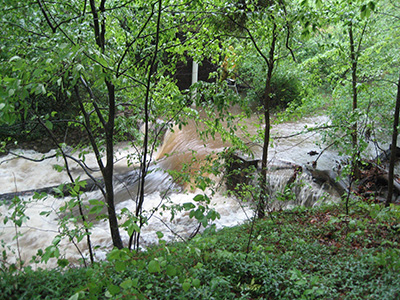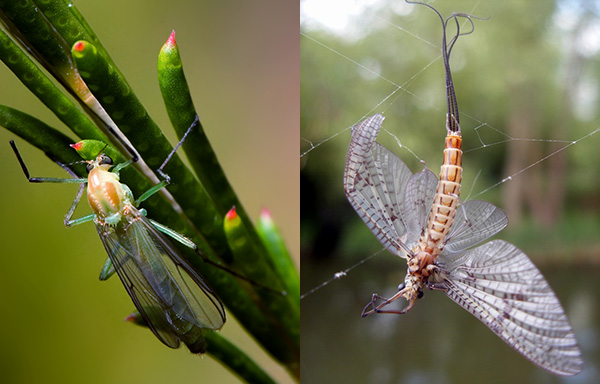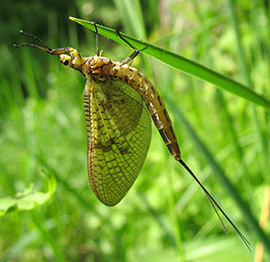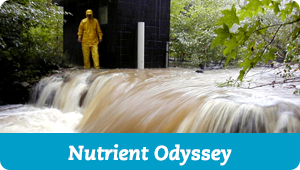How do ecologists diagnose a sick stream? For Don Weller, it comes down to counting insects.

High-energy water erodes stream banks faster, destroying the habitats of stream life. Paved surfaces like roads and parking lots help create high-energy streams because water rushes right off them.
It’s not just the numbers of insects that matter, but also the types. Tougher species, like blackflies or midges, can tolerate unhealthy stream conditions. But others, like mayflies, are much pickier. They cannot survive in polluted, high-energy streams that eat away at the banks. Mayflies act as the proverbial canaries in the coal mine—once their numbers start to dwindle, scientists know a stream’s health is beginning to fail.
Some ecologists go out in the field to identify insects in individual streams. Don Weller works on another side, as an ecological modeler. Modelers are the key numbers-crunchers of the science world. They take data collected from the field and use it to create mathematical equations, similar to artists painting a landscape. In Weller’s lab, the modelers work with data on insects and other stream invertebrates from streams all over Chesapeake Bay. They also pull in data on other elements—such as paved surfaces, rainfall and farmland—and arrange them into equations that can predict the health of streams all across the region.
This big-picture view enabled Weller’s lab to pinpoint one of the biggest threats to streams: impervious surfaces. Most roads, driveways and parking lots are covered with impervious material like asphalt or concrete. Most buildings also have impervious roofs. Water can’t seep through impervious surfaces. Instead of soaking into the soil below, it runs off into the nearest stream, often carrying sediment, excess nutrients and harmful chemicals with it. During storms, massive inputs of water rush from the pavement directly into streams, forcing them to flow faster. High-energy flows erode the stream banks, making them steeper and destroying the habitats of mayflies and other aquatic creatures.
Weller’s lab also discovered it doesn’t take much to throw an ecosystem off balance. Some vulnerable insect populations plummeted when only 2 percent of the watershed was covered with impervious surface.

Insects like the non-biting midge (left) can tolerate polluted streams. ©JJHarrison. Mayflies (right) can only survive in clean, healthy streams. © Anders Sandberg from Oxford, UK.
Fortunately, there are ways to protect mayflies, and by extension the oysters, seagrasses and other creatures that live further downstream. Gravel roads soak up more water than asphalt or concrete. Green roofs and rain gardens can reduce runoff from buildings. Forests and wetlands can absorb many harmful chemicals that wash off the pavement. Putting forested land between streets and streams can help minimize the impact of stormwater runoff.
Assessing stream health may begin with counting insects. But the importance of healthy streams goes much further—spilling over into the water we drink, the food we eat and the land we inhabit.
Learn more about mapping nutrient pollution in the Ecological Modeling Lab.


 Even if you can’t control how much impervious surface is in your neighborhood, you can still make it less harmful. Here are some tips to make your yard healthier for streams:
Even if you can’t control how much impervious surface is in your neighborhood, you can still make it less harmful. Here are some tips to make your yard healthier for streams:

